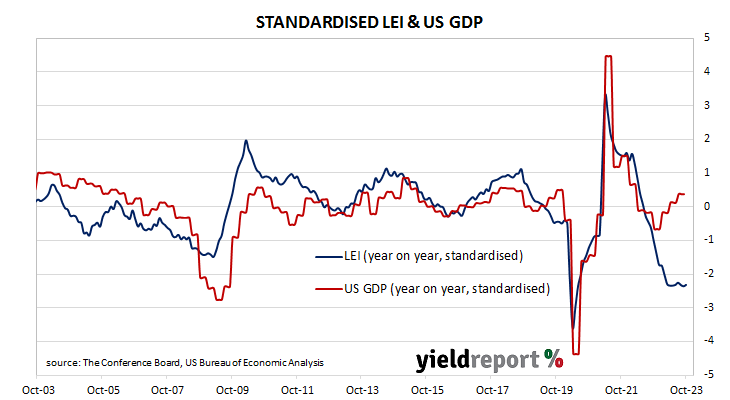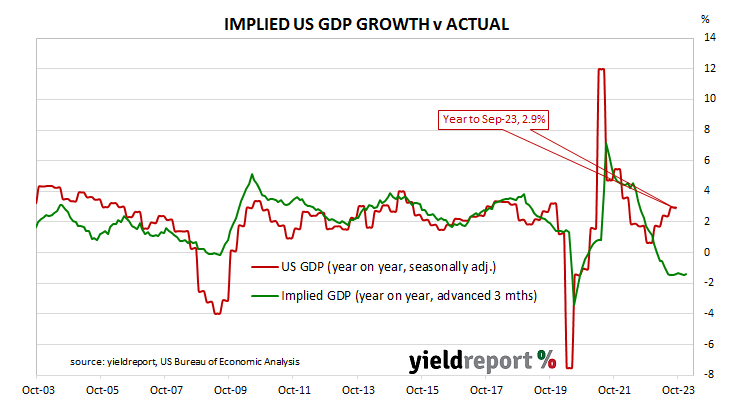Summary: Conference Board leading index down 0.8% in October, lower than expected; business conditions, new orders, falling equities, tighter credit conditions drives decline; short-term US Treasury yields rise, long-term yields fall; rate-cut expectations soften; LEI signals “very short recession” in near term; regression analysis implies 1.5% contraction in year to January.
The Conference Board Leading Economic Index (LEI) is a composite index composed of ten sub-indices which are thought to be sensitive to changes in the US economy. The Conference Board describes it as an index which attempts to signal growth peaks and troughs; turning points in the index have historically occurred prior to changes in aggregate economic activity. Readings from March and April of 2020 signalled “a deep US recession” while subsequent readings indicated the US economy would recover rapidly. More recent readings have implied US GDP growth rates will turn negative sometime in the second half of 2023 or the first half of 2024.
The latest reading of the LEI indicates it decreased by 0.8% in October. The fall was a larger one than the 0.6% decrease which had been generally expected as well as September’s figure of -0.7%.
“Among the leading indicators, deteriorating consumers’ expectations for business conditions, lower ISM Index of New Orders, falling equities and tighter credit conditions drove the index’s most recent decline,” said Justyna Zabinska-La Monica of The Conference Board.
Short-term US Treasury bond yields rose on the day while longer-term yields declined. By the close of business, the 2-year Treasury yield had gained 3bps to 4.92%, the 10-year yield had lost 2bps to 4.42% while the 30-year yield finished 1bp lower at 4.58%.
In terms of US Fed policy, expectations of a lower federal funds rate in the next 12 months softened a touch. At the close of business, contracts implied the effective federal funds rate would average 5.335% in December, in line with the current spot rate, 5.335% in January and 5.315% in March. November 2024 contracts implied 4.62%, 71bps less than the current rate.
“After a pause in September, the LEI resumed signalling recession in the near term,” added Zabinska-La Monica. “The Conference Board expects elevated inflation, high interest rates and contracting consumer spending, due to depleting pandemic saving and mandatory student loan repayments, to tip the US economy into a very short recession. We forecast that real GDP will expand by just 0.8% in 2024.”
The Conference Board had previously forecast a “shallow” recession in the first half of 2024. Regression analysis suggests the latest reading implies a -1.4% year-on-year growth rate in January, up from the -1.5% implied for the year to December by the previous month’s LEI.



